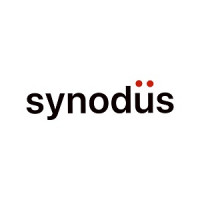From EHR to AI: Why Every Type of Healthcare Software Matters in 2025

Strong 8k brings an ultra-HD IPTV experience to your living room and your pocket.
The healthcare industry is evolving at a pace never seen before. As patients demand more convenience, providers face tighter regulations, and medical technologies push new boundaries, one thing becomes clear: software is the new backbone of healthcare.
But with dozens of systems available, knowing which software to choose—and why—is a growing challenge. That’s why understanding each type of healthcare software is no longer optional. It’s essential for any healthcare provider or digital health innovator planning for 2025 and beyond.
In this article, we’ll explore how healthcare software has evolved, what categories are emerging, and why mastering the landscape is crucial for digital transformation.
The Rise of Software-First Healthcare
Historically, healthcare lagged behind sectors like finance and retail when it came to adopting modern digital tools. Paper charts, disconnected databases, and manual scheduling systems were still common even into the early 2010s.
That changed dramatically over the past decade.
Global health crises like COVID-19, the rise of value-based care models, and increasing patient expectations pushed the industry to embrace technology faster. What began with basic EHR implementation has grown into a full-blown digital ecosystem that touches every corner of clinical care and operations.
Today, hospitals, clinics, and private practices rely on multiple layers of software to function—from diagnosing illnesses and managing lab results to tracking inventory, processing insurance, and offering remote care.
But here’s the problem: many organizations are still unclear on what each system does, how they interact, and what they truly need.
More Than Just EHR: A Fully Integrated Software Ecosystem
Most healthcare leaders are familiar with Electronic Health Records (EHRs) and Electronic Medical Records (EMRs). These are central tools for storing patient data, tracking treatment, and ensuring compliance.
But the EHR is only one of 20+ critical systems required to build a high-performing, digitally enabled care environment.
Here’s a look at some of the most impactful categories:
1. Hospital Information Systems (HIS)
These platforms centralize operational management—bed allocation, shift scheduling, emergency room workflows, and more.
2. Medical Billing & Insurance Claims Software
They automate invoice generation, track insurance eligibility, and reduce billing errors that lead to delays and revenue loss.
3. Telemedicine Platforms
Enable real-time virtual consultations, expanding access to care and reducing strain on physical facilities.
4. Pharmacy & Inventory Management
Track stock levels, expiration dates, medication dispensing, and order history for accurate pharmaceutical oversight.
5. Remote Patient Monitoring (RPM)
Wearables and connected devices track chronic conditions from home, transmitting vitals and trends to care teams in real time.
6. AI-Powered Diagnostics
Use deep learning models to analyze imaging scans, pathology results, and patient data for earlier and more accurate diagnoses.
7. Laboratory Information Systems (LIS)
Coordinate lab workflows, from sample collection and tracking to reporting and integration with EHRs.
8. Clinical Trial Software
Manages protocol design, participant enrollment, ethics approval, and compliance documentation for research institutions and pharma.
9. VR/AR-Based Medical Training Tools
Offer immersive simulations for surgical training, anatomy lessons, and emergency response planning.
Why It’s Crucial to Understand Each Type of Healthcare Software
Each system supports a unique area of care or operations—but their real power lies in integration. When software systems communicate effectively, providers benefit from:
- Reduced administrative overhead
- Better care coordination between departments and locations
- Increased patient satisfaction through digital touchpoints
- Improved clinical outcomes from data-backed decisions
- Stronger compliance with HIPAA, HL7, GDPR, and other frameworks
However, integrating the wrong tools—or implementing them in isolation—can lead to redundancy, data silos, and wasted investment.
That’s why healthcare executives, IT teams, and consultants need to grasp the function and fit of every type of healthcare software before building or modernizing their digital infrastructure.
A Guide to the 20 Most Critical Types of Healthcare Software
To help organizations make more informed decisions, Synodus published a comprehensive guide outlining 20 essential healthcare software types that providers should know in 2025.
This in-depth article covers each system’s features, use cases, integration potential, and the role it plays in a broader digital health strategy. Whether you're in charge of procurement, implementation, or IT roadmap planning, it offers a clear, structured overview that removes the guesswork.
Trends That Will Shape Software in the Coming Years
Understanding what’s available today is only half the battle. The healthcare software space is rapidly evolving, with several trends shaping its future:
Artificial Intelligence as a Core Feature
AI is moving beyond diagnostics into areas like patient triage, billing fraud detection, and personalized care pathways.
Interoperability Standards
Initiatives like FHIR (Fast Healthcare Interoperability Resources) and open APIs are enabling smoother data exchange between systems.
Consumer-Like UX Design
Patients now expect the same convenience from healthcare apps as they do from e-commerce or ride-sharing platforms.
Cloud-Native Infrastructure
Cloud-based healthcare systems offer scalability, security, and real-time updates—critical for large hospital networks and remote clinics alike.
Cybersecurity by Design
With rising threats, security is no longer an afterthought. Encryption, access control, and compliance are being baked into the architecture of all modern healthcare tools.
Final Thoughts: Build Smarter, Not Just Bigger
Digital transformation in healthcare isn’t about buying more tools—it’s about buying the right tools, for the right reasons, at the right time.
By taking the time to understand the function of each type of healthcare software and how it fits into a holistic strategy, providers can reduce operational burdens, enhance clinical precision, and ultimately deliver better care to their patients.
If you’re in the process of assessing your software ecosystem, expanding services, or launching a new digital health product, start by reviewing what each tool can actually do—and how they work together.
Your digital future in healthcare begins with making smarter choices today.
Note: IndiBlogHub features both user-submitted and editorial content. We do not verify third-party contributions. Read our Disclaimer and Privacy Policyfor details.







